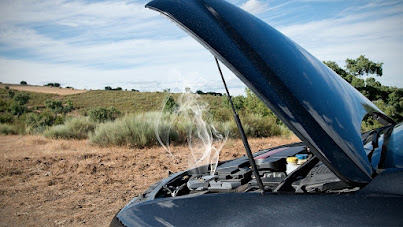What To Do When Your Car Overheats And Then Goes Back To Normal
Car overheat is a very common problem that can be disastrous for your engine. When your car overheats the water breaks down into hydrogen and oxygen, this mixture can cause to some serious damage in a short time. The article provides a few helpful tips on what you should do if your car over heats and then goes back to normal.
What To Do When Your Car Overheats And Then Goes Back To Normal
If your car overheats and then goes back to normal, there are a few things you should do. First, check the radiator and make sure that it is full of coolant. If it is not, add coolant and continue to drive. If the problem persists, take your car to a mechanic to have it checked out.
Why Does My Car Overheat?
If your Car Keeps Overheating Then Going Back to Normal there are a few possible explanations. First, it is possible that the thermostat is sticking and not opening all the way. This can cause the engine to overheat for a short period of time and then return to normal once the thermostat opens. Second, there may be an issue with the water pump or other cooling system component that is causing the engine to overheat and then go back to normal once the component starts working again. Third, the engine could be overheating due to a build-up of sludge or debris in the cooling system, and once this build-up is cleared, the engine will return to normal. Finally, it is also possible that there is an issue with the engine itself that is causing it to overheat and then go back down to normal temperature. If your car overheats and then goes back to normal on a regular basis, it is important to have it checked out by a mechanic so that the underlying issue can be diagnosed and repaired.
How To Check If Your Car Needs Repairs
If you notice your car overheating, it's important to take action immediately. Pull over to the side of the road and turn off the engine. Let the car cool down for at least 15 minutes before checking the radiator. If the radiator is empty, you'll need to add coolant. Once the radiator is full, start the engine and let it idle for a few minutes. If the temperature gauge stays in the normal range, you're good to go. However, if it starts to rise again, there could be a more serious problem and you should take your car to a mechanic right away
Tips for Preventing Future Overheating
If your car has overheated in the past, there are a few things you can do to help prevent it from happening again. First, make sure you always have enough coolant in your system. If you notice the level is low, add more before it gets too low. Second, check your radiator hoses regularly for leaks or cracks. If you see any damage, replace the hose as soon as possible. Third, have your cooling system flushed and refilled every 30,000 miles or so to prevent rust and corrosion. Finally, keep an eye on the temperature gauge while driving and if it starts to climb too high, pull over and turn off the engine immediately. By following these tips, you can help prevent your car from overheating in the future.




Comments
Post a Comment